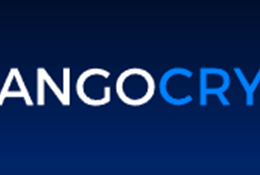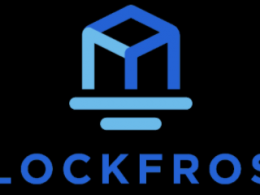Disclaimer: The following assessment is based on the CRCI Proposal, publicly available information about the project and team, and an interview conducted with the proposer, RJ. This assessment is intended to provide an overview of the project and its potential impact on the Cardano ecosystem. It is not intended to serve as advice or a recommendation to take any voting or funding action.
Link to Ideascale proposal: https://cardano.ideascale.com/c/idea/104883
Proof of Reputation:
- Working Product or MVP: CRCI has completed the initial phases of the project, including R&D, scoring process documentation, data collection, initial reviews, and the launch of their intermediary website.
- Previous Proposals and Completions: This is RJ’s first Catalyst Proposal. While CRCI is a new proposal in the Project Catalyst program, RJ has shown commitment by bootstrapping the initial phases and actively contributing to the Cardano community.
Context:
- Category: Products & Integrations
- Funds requested: 372,000 ADA
- % of category funding: 4%
- % of total funding: 0.74%
1. Proposal Description:
This is the introduction of the project proposal, which should give an overall understanding of what the project is about.
Overview: The Crypto Research and Confidence Insights project (CRCI) is a proposed solution to the lack of accessible, standardized information and fundamental analysis in the Cardano DeFi ecosystem. The project aims to bridge the gap between the current state of DeFi and its potential by focusing on consumer protection and engagement.
Purpose: The main goal of the CRCI project is to foster informed decision-making in the Cardano DeFi ecosystem by providing a comprehensive and readily available visual index of DeFi projects. This is aimed at enhancing transparency and accountability in the ecosystem. The objectives include developing a reliable and robust CRCI web application interface, continuing project evaluations and updates to ensure relevance with the current state of DeFi projects, and engaging with the community, ecosystem partners, and researchers to promote knowledge sharing and further innovation in the DeFi space.
Background: The project stems from the observation that in today’s landscape of Decentralized Finance (DeFi), rapid innovation often outpaces the development of robust user protections. This dichotomy between the current state of DeFi and its potential led to the initiation of the CRCI project.
2. Project Team:
An understanding of who is behind the project can shed light on their capability to execute it:
Team Members: The project team consists of three main contributors: RJ, the Project Lead; Vivek Nankissoor, the Business Development Lead; and Michael Stewart, the Technical Lead.
Skills and Expertise:
- RJ brings a unique blend of skills from his academic background in Classical Studies, 20 years of retail experience, and deep involvement in the Cardano ecosystem. His research abilities, analytical skills, and insights into consumer behavior contribute to a nuanced understanding of DeFi fundamental analysis.
- Vivek Nankissoor, with over 15 years of experience in database requirements, design, and development, has established and grown web analytics, marketing automation, and QA practices.
- Michael Stewart, with over 18 years of software development and architecture experience, has been a member of the Cardano community since 2017.
Track Record: RJ has been an active Cardano community member since early 2018 and has a reputation for consistency and integrity. He has been involved in various Cardano initiatives, including the Cardano Education Initiative and the Cardano Ecosystem Mind Map. Both Vivek Nankissoor and Michael Stewart are co-founders of MSVN, an infrastructure company, demonstrating their ability to establish and grow initiatives.
3. Project Details:
First of all, some context:
The proposal falls under the “Products & Integrations” category. The overall fund for this category is 9,080,400 ADA. The proposal requests $104,000 USD (372,000 ADA), which constitutes 4% of the total fund in this category.
In-depth information about the project and how it plans to address the issues at hand:
Methodology: The project will utilize a scoring structure and review process, developed through extensive research and development. The scoring process will be documented to ensure transparency and consistency in review evaluations. Data will be collected on various DeFi projects, with an emphasis on information that helps users assess security, user experience, and project legitimacy. The project will also conduct comprehensive reviews of prominent DeFi projects and develop an intuitive visual matrix to simplify the presentation of review data.

Timeline: The project has already completed several milestones and is now moving into its expansion and growth phase. Here’s a detailed breakdown:
Phase 1: Project Initiation and Foundation (Completed)
Phase 1 of the project, now completed during the bootstrapping phase, involved extensive research and development, creation of a scoring process, data collection, initial reviews of 30+ DeFi projects, development of a data visualization matrix, and the launch of a user-friendly website. This phase also included the creation of a public project overview presentation and a comprehensive business structure presentation.
Phase 2: Expansion and Growth
- Intuitive Website Interface and API Integration interface: TBD
- Data Visualization Matrix: TBD
- Holding Projects to High Standards: Ongoing
- Funding Awareness Campaign: Ongoing
- Continued Reviews: Ongoing
- Enhancements to User Experience: Ongoing
- Community Engagement: Ongoing
- Strategic Partnerships: Ongoing
Out of these activities the Catalyst Funding is focusing on 2 main key milestones to be achieved:
- Creation of a Website and API Integration
- Conduct more reviews of new and update existing DeFi Project Reviews
Resources: What resources will be needed?
From my point of view, the following resources would be necessary for one or multiple people:
- Web Developers: To build and maintain a user-friendly website, develop the API integration interface, and continuously improve the platform’s user interface based on user feedback.
- Data Analysts: To gather relevant data on various DeFi projects and conduct comprehensive reviews. They will also be responsible for developing the intuitive visual matrix that simplifies the presentation of review data.
- DeFi Researchers and Content Creators: To conduct ongoing reviews of new and existing DeFi projects, ensuring that the platform remains valuable for users.
4. Impact Assessment:
Understanding the potential impact of the project is crucial for its selection:
- Target Audience: The target audience for this project includes individuals and entities involved in the Decentralized Finance (DeFi) landscape, particularly within the Cardano ecosystem. This includes investors, DeFi project developers, and enthusiasts who seek reliable, standardized information and fundamental analysis to make informed decisions.
- Impact on the Cardano Ecosystem and Community: The project aims to fill an essential gap in the DeFi space within the Cardano ecosystem by providing a user-friendly and reliable DeFi review platform. This platform will empower individuals to make informed decisions and promote accountability through transparency, user protection, and excellence in the DeFi ecosystem.
- Value for Money for the Cardano Ecosystem: The project team views the CRCI as a business designed to be self-sustaining with its own sources of revenue, and they view the Catalyst funding as a kickstarter to help get them on their feet. They have shouldered the non-trivial cost of the initial engineering and development and are now looking to the community to get to the next stage. The team believes that the necessity for the CRCI’s existence is apparent and that they are not just pursuing an opportunity, but addressing an imperative need. They have brought substantial groundwork as evidence of their dedication and commitment and are seeking the necessary support to carry their vision forward.
The expected outcomes of the CRCI project include:
- Interactive Web Application: A user-friendly platform that is continuously updated with reviews and offers numerous features such as searchable project cards, user profiles, and a project comparison tool.
- API Access: A multi-tier API access, with free standard review metrics and information, and premium access for detailed review insights.
- Upgrades, Optimization, and Maintenance: Continuous enhancement of the platform based on user feedback, ensuring an optimal user experience.
- Community-Funded Reviews: More Cardano ecosystem DeFi reviews and analyses of various projects, covering aspects like social engagement, whitepaper research, tokenomic breakdown, etc.
Sustainability: The proposal indicates that the project is designed to be self-sustaining, with its own sources of revenue. The project is seeking funding from the Catalyst community to reach the next stage, but it appears that the project will continue even without this funding. The project’s sustainability in 4 months will likely depend on the success of its business model and the level of engagement from the DeFi community.
Business Model and Monetization Plans: The project’s primary business model involves closely collaborating with DeFi builders, emphasizing transparency, user protection, and excellence. This suggests that projects may be able to earn a badge or certificate of reliability/accountability from CRCI. The project also plans to expand to cover DeFi projects on other platforms like Polkadot. The proposal mentions unannounced partnerships, including launchpad initiatives, ITO, and ISPO, which could provide additional revenue streams. The project also plans to offer consultancy services to help projects improve in areas where they have gaps.
5. Risk and Contingency Planning:
Every project faces potential risks and challenges. Here are the main risks associated with this project:
- Subjectivity: While the CRCI process involves some level of subjectivity, the team aims to minimize this by applying consistent measurement criteria across all projects.
- Scalability: The labor-intensive nature of the assessment process could potentially slow scalability. However, the team plans to expand by bringing in more DeFi researchers & content creators to handle the increasing workload, thereby maintaining the quality of assessments.
- Lack of Open Sourcing: The project follows a model similar to traditional rating agencies, which may not be fully open source. However, the team emphasizes transparency and consistency in their review process.
- Credibility: The CRCI team is composed of experienced individuals with a proven track record in the Cardano ecosystem. They plan to collaborate with reputable projects, influencers, and organizations to build credibility within the community.
- Measurement of Outcome: The project focuses on qualitative assessments, operationalized by an intelligent weighing mechanism. This approach, while not purely quantitative, provides a comprehensive view of the projects under review.
6. Budget Estimation:
A breakdown of the project’s budget provides insight into its financial feasibility:
- Self-Funded Contributions (Bootstrapped): $265,000 USD (950,000 ADA) This includes costs for R&D, scoring process documentation, initial data collection, initial reviews, public project overview presentation, business structure presentation, and the project web portal.
- Catalyst Funding Request (Future Milestones): $104,000 USD (372,000 ADA)
- Interactive Web Application: $30,000 USD (107,000 ADA)
- API Access for 3rd Party Use: $20,000 USD (71,500 ADA)
- Upgrades, Optimization, and Maintenance for 1 Year: $9,000 USD (32,100 ADA)
- Community Funded Reviews: $45,000 USD (160,500 ADA)
The project has been largely self-funded so far, with the team bootstrapping the initial stages. For the next stages, the team is requesting funding from the Catalyst program. The funding status is contingent on the approval of this proposal.
7. Q&A with RJ
Q1: Could you provide more details on your business model? Specifically, will projects be able to earn a CRCI label of reliability/accountability?
A: Our business model emphasizes collaboration with DeFi builders, promoting transparency, user protection, and excellence. On our platform, we will distinctly showcase projects that commit to excellence, regardless of their CRCI Score. This is an indicator to the community that wherever they currently sit in terms of the CRCI confidence index, they are working with the CRCI in terms of being accountable to continue to build in a manner that improves their CRCI Score. It’s worth noting that any data that requires special access is not included in our scoring methodology, so all the results for which a project improves its score are publicly available.
Our DeFi leaders certainly want to portray to the community their continued commitment to excellence, as there is always room for improvement, but there is currently no third-party assessment standard for which they can display their intentions against the CRCI metrics. Well-intended projects with room to grow will show that the community should not count them out, and our platform will also highlight that they are actively engaged with CRCI to improve their project from the CRCI perspective.
This is certainly a commitment that bad actors and projects that do not value accountability in the same way, are less likely to make, considering the results and criteria measured are publicly verifiable. There is no pay-to-win, it’s all about publicly verifiable results.
It’s a business model that raises the standard, it’s another way the Cardano ecosystem continues to lead, and our DeFi ecosystem is better for it.
Q2: How do you plan to market the project without a dedicated marketing budget?
A: The catalyst proposal is not the entire scope of our project. We’re coming to Catalyst with what we feel is reasonable to ask from a community-managed fund. That said, part of our marketing scope is intimately related to our API which will allow our research and scores to be distributed into the Cardano ecosystem and displayed in a manner that elevates our reach. Presenting our research with quality and integrity is also an important part of our marketing.
Q3: Could you elaborate on your sales plan? Is it more focused on providing consultancy for projects to help them improve?
A: The reality is that even if your online content is exceptional, people are drawn to free resources. There are options we’re considering for monetizing various levels of public access to our data, but our main business plan is to partner with our DeFi builders to help them identify where to cover ground in terms of the metrics we cover. This is focused on the structure of our research and our intentionally weighted scoring approach. There are also opportunities where we can leverage our methodology to provide bespoke research requests, in the form of VC research, competitor analysis, and other services along those lines.
Q4: How many DeFi project assessments do you plan to conduct with the allocated funding of $45,000 USD for four months? What’s the plan for conducting reviews after this period?
A: Projects have varying levels of complexity and details to cover. In the very dynamic environment of Cardano’s ecosystem, it’s also the case that some projects have made significant advancements since their last review. For instance, many projects are busy working on a v2 version of their protocol to take advantage of the features “Vasil” introduced, so there are a lot of updates to existing reviews and projects yet to be covered. If we’re able to attract more resources in the form of funding and team expansion, we can increase the rate of coverage.
It’s a perpetual process, which is why we wanted to build an ecosystem accountability project that sustains itself over the long term. We are not looking to Catalyst to carry us indefinitely, we just want help in this next stage of our journey. We also didn’t want to come with empty hands, so we have a tremendous amount of resources invested to bring value and help identify and highlight our projects that are leaders in accountability.
Q5: You aim for the project to be self-sustainable within four months. What gives you confidence in achieving this, and what is your plan if this goal isn’t met?
A: Considering the majority of our process has been established, we’re in our implementation phase. One of the earliest iterations of this initiative was posted in Jan, 2022 so with well over a year’s worth of iteration, development, research, and incubation, we’re moving toward onboarding our first customers. It may take some time to be in a profit range, which will likely take more than 4 months, but having our first customers in the upcoming months puts us on that path.
Q6: What are the two biggest risks that could prevent you from delivering on your goals, and how do you plan to mitigate these risks?
A: For the objectives of our catalyst proposal, the risks are quite low. The concepts for the web application and API are well established. We have the skills, ability, structure, and objectives, but as with all things in a self-funded project, we could really use a boost in resources to get to the next level.
There is no risk in conducting additional reviews, it is a continuation of applying our methodology and providing a mirror of our DeFi ecosystem, but with some renewed energy to help sustain operations with less financial stress.
Q7: What is the current website traffic, and what would you consider a successful outcome for CRCI in terms of traffic?
A: Our current website is not our main project, it’s a placeholder meant to act roughly as a pitch deck. It’s a great question as to what success would look like in terms of traffic. From that lens, I think we would probably have to count the API requests, and I think this kind of project will be in traffic discovery mode for some time considering its niche content.
In terms of project success, I think that would mean being referenced in DeFi and accountability conversations where projects are being talked about in the media, of any kind and at any level. From individuals posting on “X” (Twitter) referencing our CRCI Scores as a point of compliment or contrast, and potentially being highlighted in various media publications, podcasts, videos, and interviews. We would like to see growing engagement on our web application, especially including opinions that challenge our conclusions, based on relevant events and topics of discussion. It’s a community effort to improve the standards of accountability for projects that propose to offer services with direct access to our personal assets.
Q8: Why do you believe that existing metrics and assessment platforms like Messari, Nansen, etc., which also include qualitative factors, are not sufficient?
A: Mainstream media and traditional assessment platforms tend to focus on well-established projects with higher visibility, however, there are many promising projects that attract investor attention, which is where the higher risk/reward opportunities and bad actors reside. It’s also the case that most risk assessments or risk rating initiatives focus almost exclusively on numerical data. TVL, market conditions, price action, wallet activity, revenue, TPS, and any other available numerical metric that can be calculated in some form or another.
While numerical metrics are important, they can only provide a partial view of a project’s potential and have limited value in the exercise of measuring the project’s proposals or implementations from a confidence perspective. The history of actions that are reflected in on-chain data is a component of a more holistic confidence index and is considered in the CRCI Scoring methodology.
The unique value of CRCI’s first principles approach to DeFi fundamental analysis is that it is more of an assessment of intent based on operational integrity. This is a domain that almost exclusively looks at everything else outside of the numbers. It’s also what people tend to mean when they insist on others to “DYOR”. We’ve been studying this domain with this objective for over a year and we have an opinion. We look at publicly available data, and assess the projects by measuring them against either objective ideals or industry best practices, all from a confidence perspective. We take our metrics and give them an intelligently weighted measurement to arrive at our CRCI Score and we’re able to plot our findings along a project’s strength of proposal and strength of implementation ratings.
In addition, we also deploy the industry’s first and unique “cumulative demerits” metric in our CRCI Score. We also differentiate ourselves by looking at the eight categories we feel are the most relevant and relatable in the domain of fundamental analysis.
– Social Engagement
– Whitepaper/LitePaper
– Tokenomics
– Team/Developers
– Audits/Track Record
– User Protections
– Industry Accolades
– Cumulative Demerits
We do this all with the guiding mission statement of our project, “The CRCI reviews each DeFi project’s capacity to communicate, execute, and provide their solutions with transparency while keeping user protection and ecosystem health as priorities.”










